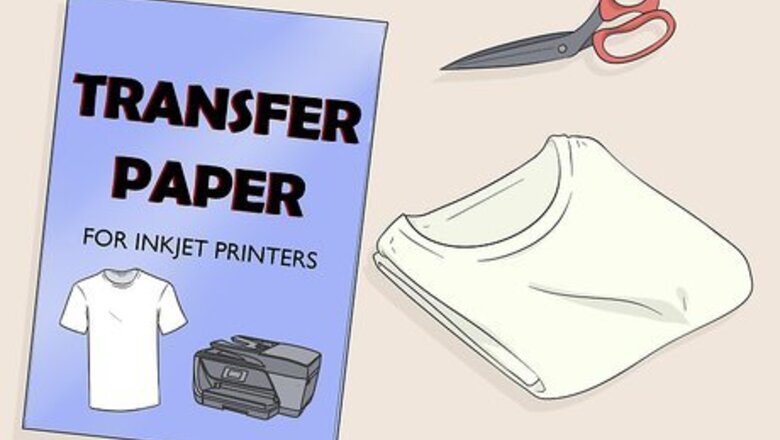
views
Preparing

Find transfers at a store in your hometown. The easiest way to make transfer clothing is by simply buying already packaged transfer kits at a crafts store, art stores, and big box retailers. These kits usually supply you with everything you need to do your own transfers including image software, some transfer paper, and maybe even a t-shirt. You can opt to use these helpful craft store kits, or go the route of creating your own transfer images, buying the specific kind of paper you want, and using your own clothing. In a nutshell, iron-on transfers are images that can be impressed on fabric. On one side is paper, and on the other is the image that will be ironed on and transferred in reverse. After placing the transfer paper on the fabric and running over the back of the paper with an iron, the image is transferred by heat to the fabric.

Create your own transfer. Find or create an image you want to use for your transfer. You can scan an image into your computer, find one on the internet, or create one in a software program. For example, you can scan an image of your child's artwork to your computer, print it out on transfer paper, and transfer the image of the artwork to a t-shirt. Or, you can use applications like Photoshop to create a new and unique image yourself, print it on transfer paper, and transfer that image to some other type of fabric. Make sure you don't use any old picture you might find on Google. You must have the rights to an image if you are going to reproduce it and sell it (like a t-shirt). If you do use Google, you can click Search Tools, then Usage Rights, then Labeled For Reuse. Also, there are many websites where you can find different kinds of images that are legally safe for you to use, transfer, and sell. Remember that transfer images that contain dark colors are usually going to show up on fabrics better than images with light colors. Also keep in mind that typical at-home printers don't print the color white; they leave that area blank because the printer assumes that the paper you are using to print your image is white, and the white paper will show through the image. If your image has white coloring in it, the iron on transfer will show up clear in that area, meaning the fabric color will show in that clear space rather than the color white. If you image has very light colored sections, those sections might appear discolored and distorted when ironed onto the fabric because of their light coloring mixing with the color of the shirt. Dark, solid colors provide the best looking results when using iron on transfers. The heavy colors contrast really well against fabrics and provide a darker, opaque color for the printer to print.
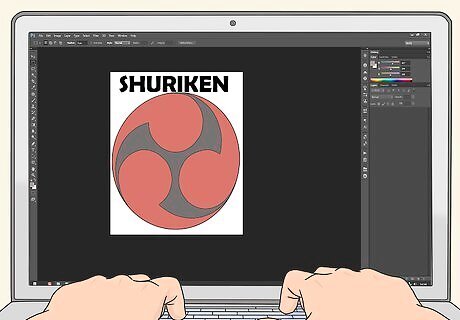
Manipulate the image. Use basic image editing software, to resize your image, add effects, change colors, or make any corrections you want, until your image is just right. The image you use can be an image from one of the many internet sites that offer transfer image options, or an image you provide yourself. As long as you can print it from your printer at home (and have the legal rights to use that image), you can transfer the image onto your fabric.
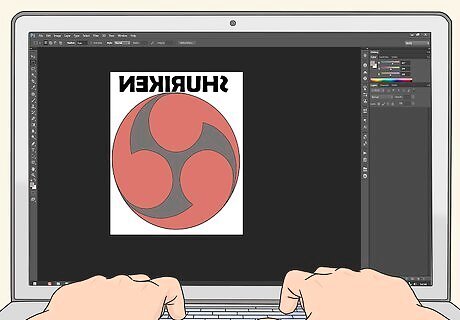
Mirror your image. This is only required for images printed for light colored fabrics. Make sure you mirror your image so the finished product is facing the right way, rather than reading or appearing backward once ironed onto your fabric. To make sure you've flipped the image correctly, the image should look flipped on the computer screen before you print it out. Flipping the image is really important if you have words on your transfer image. Without flipping it, you words will be transferred on backward to the fabric. To mirror the image in your computer software, you may need to use a "Reverse", "Flip Image Horizontally", or "Mirror" commands. See the program's Help section for more information.
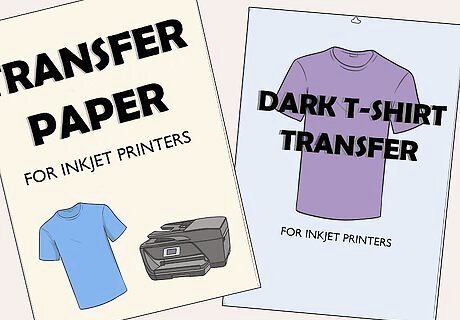
Use the right kind of transfer paper. Transfer paper comes in two different variations: transfer sheets to be used on light colored fabrics, and transfer sheets to be used on dark colored fabrics. Using the right kind of transfers sheets can help ensure that you get the best looking results from your iron on transfer. For example: Transfer sheets meant to be used on light fabrics are meant for fabrics that are white, yellow, light gray, or any other fabric that is light in nature. The transfer paper used for light colored fabrics is transparent. This means any areas of your image that contain the color white will instead appear clear once ironed on to the shirt. The fabric color will show through rather than the white coloring of the image. If your transfer design has any light colors (other than white), the image may seem distorted and discolored once it is transferred onto the fabric. Try to use medium to dark colors when using this kind of transfer paper, so the resulting image is bold and clear. Consider trimming close to the edges of your design, because the transparent areas of the paper surrounding the design can still be seen on the fabric. Transfer sheets meant to be used on dark fabrics are meant for black, dark gray, dark blue, or any other dark colored fabrics. These paper sheets are thicker, and have a white backing so the color white and other light colors can show up distinctly on the darker fabric. The caveat with using this kind of transfer paper is that any background areas of your image will appear white rather than translucent. This means you'll have to carefully cut around and inside any letters or other design elements if you want the color of the shirt to show through a certain spot rather than the color white. For example, if you were printing letters, you would need to cut out the space inside an 'O' or an 'R'. Or, you could have the solid white colored background as part of your design. However, more often than not, the white background isn't the intended look for using iron on transfers on dark fabrics. EXPERT TIP Joy Cho Joy Cho Designer & Style Expert, Oh Joy! Joy Cho is the Founder and Creative Director of the lifestyle brand and design studio, Oh Joy!, founded in 2005 and based in Los Angeles, California. She has authored six books and consulted for creative businesses around the world. Joy has lectured on business, leadership, and entrepreneurship at conferences and companies such as AltSummit, Pinterest, Target, and Hallmark, while her home and studio have been featured in magazines such as House Beautiful, Parents, and Domino. She has also been named one of Time's 30 Most Influential People on the Internet multiple times and has the most followed account on Pinterest with more than 14 million followers. Joy Cho Joy Cho Designer & Style Expert, Oh Joy! Find a shirt that's the right material for your transfer. Certain materials absorb and stick to transfers better than others. You usually want to use cotton over a polyester finish.
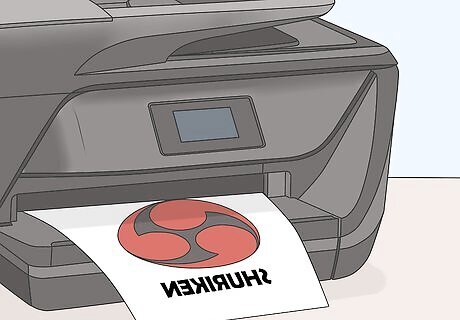
Print the transfer. Before you print your transfer image onto the transfer paper, do a test run by printing your image on a regular piece of paper. This test run helps to make sure that the colors of the image are how you want them to look, see if your printer will print the entire image rather than cutting a section out, and to see the size of your image. Sometimes how your image looks on the computer screen is different than how it looks once it is printed. Make sure that you print the transfer on the correct side of the page. This should be clearly marked. Usually the printing side is free from any markings, and the back side has some design printed on it. If you're not sure on exactly how to insert the transfer paper into your printer, do a test run with a normal sheet of paper. Draw an X on one side of the normal paper and have it go through your printer to see what side of the paper gets printed on. If you are going to be printing your image on a laser printer, you will have to buy specific transfer paper for laser printers. Normally, inkjet printers work best when printing out transfer images.
Applying

Lay out the fabric. Place the t-shirt or fabric on a hard, flat surface, and smooth out the shirt with the iron if the shirt happens to be wrinkly. The surface you're ironing on should be heat resistant (unlike an ironing board) and should be large enough to be able to iron the entire area of the transfer.
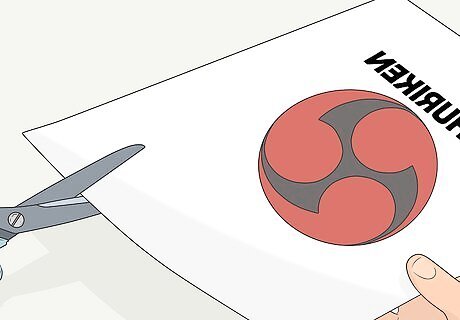
Trim the transfer. Trim around the transfer image so you know exactly what shape the image is, making it easier to accurately place it and position it on the fabric. You'll want to cut and stay as close to the edge of your design as possible. This will help make your transfer on image appear seamless. If you're planning to iron on your transfer to a light colored fabric, you need to wait to peel the backing off of the transfer image until after it has been ironed on. If you're planning on ironing your transfer onto a dark fabric, the backing of the transfer is going to be peeled off before you iron on the design. When in doubt, look at the instructions that come with the package of transfer paper.

Protect your fabric from the transfer. Place a piece of cardboard or a folded up brown paper bag inside the shirt directly underneath where the transfer image will be ironed on. Putting a barrier between the two pieces of fabric stops the heat of the iron from transferring the image onto both sides of the t-shirt.
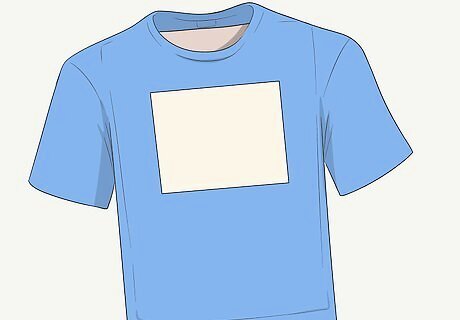
Position the transfer. Place the transfer image-side down on the fabric. Put the transfer on the fabric precisely where you want the image to be.

Iron on the transfer. Ironing on transfer images differs from normal ironing with an ironing board. Iron on transfers need a lot of direct heat, meaning using an ironing board wouldn't really be efficient since ironing boards help to spread out and diffuse heat. Ironing on hard surface like Formica or a wooden cutting board would be especially useful for doing iron on transfers because they are good at retaining heat. Set your iron to the hottest setting so it can transfer onto the fabric properly, but do not use steam. Steam can greatly hinder the transfer's ability to adhere to the fabric.
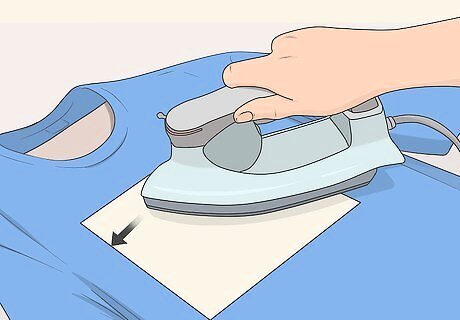
Disperse the iron's heat evenly. Iron the image by moving the iron around in large circles on top of the transfer paper. Focusing initially on the outside edges of the image, and gradually work your way inward to the center of the image. Be sure to consistently apply pressure and iron for about 3 minutes. Keep the iron moving to prevent scorching the paper and burning the image. Check to make sure the edges of the transfer are fully attached before you move onto removing the backing paper. If the edges are not fully stuck to the fabric, continue to iron the edges of the transfer. Be sure to apply steady and even pressure as you iron so the complete image is fully attached. EXPERT TIP Joy Cho Joy Cho Designer & Style Expert, Oh Joy! Joy Cho is the Founder and Creative Director of the lifestyle brand and design studio, Oh Joy!, founded in 2005 and based in Los Angeles, California. She has authored six books and consulted for creative businesses around the world. Joy has lectured on business, leadership, and entrepreneurship at conferences and companies such as AltSummit, Pinterest, Target, and Hallmark, while her home and studio have been featured in magazines such as House Beautiful, Parents, and Domino. She has also been named one of Time's 30 Most Influential People on the Internet multiple times and has the most followed account on Pinterest with more than 14 million followers. Joy Cho Joy Cho Designer & Style Expert, Oh Joy! Hold the iron on top of the transfer instead of constantly moving. Iron-ons need a lot of heat, so moving the iron around rapidly can affect the final finish of your transfer. Make sure the iron is the correct temperature and hold it for as long as possible.

Wait for the transfer to cool. Turn off the iron when you're finished, and let the image cool down for a few minutes. If you take off the back of the transfer paper before the image is cool enough, you could disastrously mess up the image.
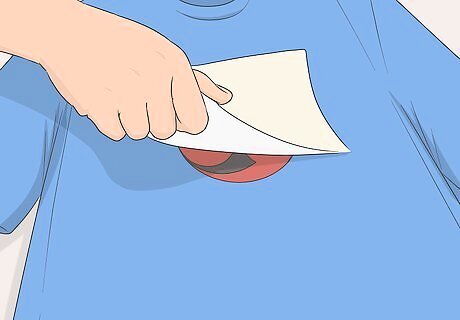
Gently peel off the backing paper. You'll want to start at one of the paper's corners.
Caring For Transferred Clothes
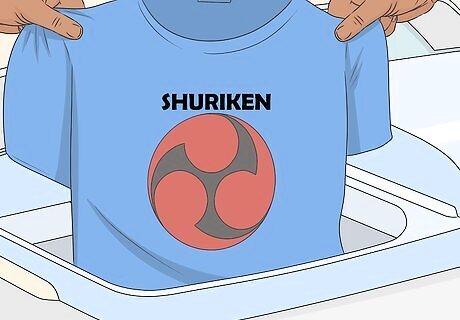
Wash your fabric correctly. Wait at least 24 hours after you've applied the iron on transfer before you wash your fabric. You can ruin the transfer if you wash the fabric before the image has time to completely set. Only wash and dry your fabric on a cool setting. If the transfer was done to clothing, turn the article of clothing inside out before you wash it. This adds a little bit more protection to your transferred on image. The more care you take with washing and drying, the longer your shirt will last.
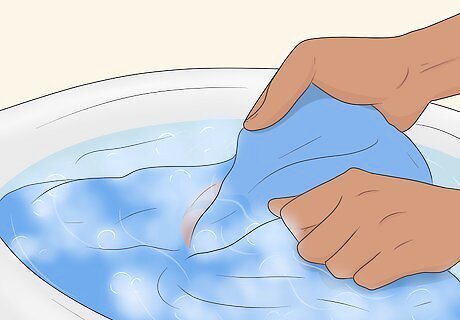
Hand wash your fabric. An alternative to washing your fabric in the washing machine is to wash it by hand. To ensure a gentle cleaning of your fabric, you can try hand washing it with some light detergent. Don't bleach your fabric. To dry your fabric, try hang drying it rather than using a drying machine. This gentle drying will help make your transferred image last longer.

Secure the edges. For extra protection against peeling, you can sew a border around the entire transfer image either with a machine or by hand. Higher quality paper should be less like to peel at the edges.











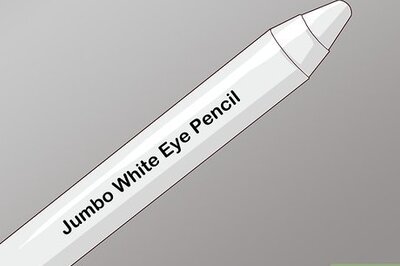






Comments
0 comment